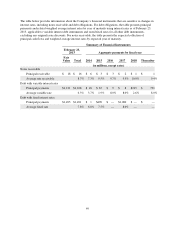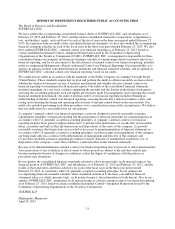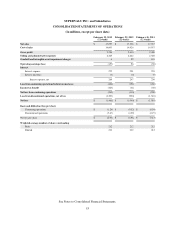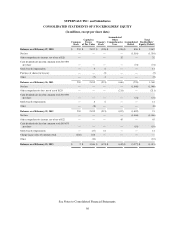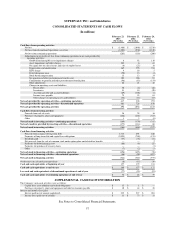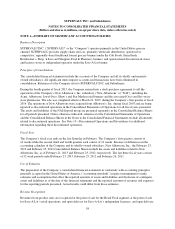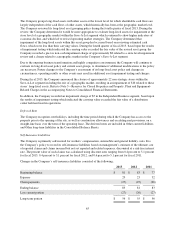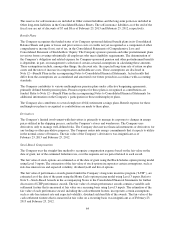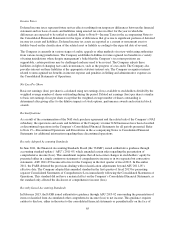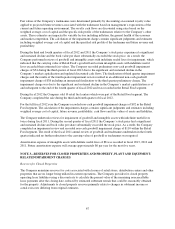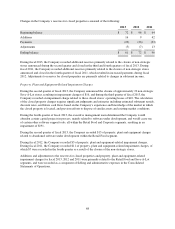Albertsons 2013 Annual Report Download - page 61
Download and view the complete annual report
Please find page 61 of the 2013 Albertsons annual report below. You can navigate through the pages in the report by either clicking on the pages listed below, or by using the keyword search tool below to find specific information within the annual report.for the Independent Business segment. Typically, invoicing, shipping, delivery and customer receipt of
Independent Business product occur on the same business day. Revenues from services rendered are recognized
immediately after such services have been provided. Discounts and allowances provided to customers by the
Company at the time of sale, including those provided in connection with loyalty cards, are recognized as a
reduction in Net sales as the products are sold to customers. Sales tax is excluded from Net sales.
Revenues and costs from third-party logistics operations are recorded gross when the Company is the primary
obligor in a transaction, is subject to inventory or credit risk, has latitude in establishing price and selecting
suppliers, or has several, but not all of these indicators. If the Company is not the primary obligor and amounts
earned have little or no inventory or credit risk, revenue is recorded net as management fees when earned.
Cost of Sales
Cost of sales in the Consolidated Statement of Operations includes cost of inventory sold during the period,
including purchasing, receiving, warehousing and distribution costs, and shipping and handling fees.
Retail Food and Save-A-Lot advertising expenses are a component of Cost of sales and are expensed as incurred.
Retail Food and Save-A-Lot advertising expenses, net of cooperative advertising reimbursements, were $86, $69
and $42 for fiscal 2013, 2012 and 2011, respectively.
The Company receives allowances and credits from vendors for volume incentives, promotional allowances and,
to a lesser extent, new product introductions which are typically based on contractual arrangements covering a
period of one year or less. The Company recognizes vendor funds for merchandising and buying activities as a
reduction of Cost of sales when the related products are sold. Vendor funds that have been earned as a result of
completing the required performance under the terms of the underlying agreements but for which the product has
not yet been sold are recognized as reductions of inventory. When payments or rebates can be reasonably
estimated and it is probable that the specified target will be met, the payment or rebate is accrued. However,
when attaining the milestone is not probable, the payment or rebate is recognized only when and if the milestone
is achieved. Any upfront payments received for multi-period contracts are generally deferred and amortized on a
straight-line basis over the life of the contracts.
Selling and Administrative Expenses
Selling and administrative expenses consist primarily of store and corporate employee-related costs, such as
salaries and wages, health and welfare, worker’s compensation and pension benefits, as well as rent, occupancy
and operating costs, depreciation and amortization and other administrative costs.
Cash and Cash Equivalents
The Company considers all highly liquid investments with a maturity of three months or less at the time of
purchase to be cash equivalents. The Company’s banking arrangements allow the Company to fund outstanding
checks when presented to the financial institution for payment, resulting in book overdrafts. Book overdrafts are
recorded in Accounts payable in the Consolidated Balance Sheets and are reflected as operating activities in the
Consolidated Statements of Cash Flows. As of February 23, 2013, February 25, 2012, and February 26, 2011, the
Company had net book overdrafts of $131, $147 and $203, respectively.
Allowances for Losses on Receivables
Management makes estimates of the uncollectibility of its accounts and notes receivable portfolios. In
determining the adequacy of the allowances, management analyzes the value of the collateral, customer financial
59


